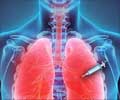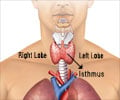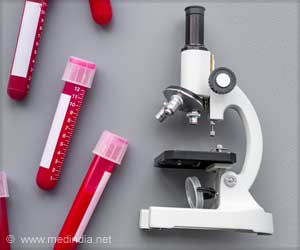
Since ES cells resemble the early developing embryo, CReM investigators studied normal lung and thyroid development in the developing embryo. They used this knowledge as a roadmap to induce the same sequence of developmental milestones in ES cells in culture.
Previous research shows that progenitor cells from the embryo's gut tube (called endoderm) give rise to the lungs, thyroid, pancreas, gastrointestinal tract and other organs. This led the researchers to focus on that time of development in order to identify what factors are responsible for how the cells differentiate.
The ES cells were engineered to include a fluorescent tag that glowed at the moment lung or thyroid cells were generated from ES cells in culture. Using this approach, the researchers differentiated the ES cells into gut tube endoderm and then identified growth factors that induced lung and thyroid lineages. Ultimately, 160 lung or thyroid progenitors could be generated per starting stem cell and these progenitors could be purified using the fluorescent tag that glowed only once the cells had become lung or thyroid cells.
"We succeeded in capturing a cell fate decision in cultured stem cells that is normally very transient during the earliest stages of lung and thyroid development," said Kotton, who also is an associate professor of medicine at BUSM. "Most importantly, our results emphasize that the precise inhibition of certain pathways at defined stages is as important as the addition of pathway stimulators at different developmental stages during lung and thyroid specification."
To demonstrate that the cells purified by the investigators were lung progenitors, Kotton's team studied the global gene expression profiles of the cells they derived and placed the cells into a three-dimensional lung scaffold. The cells grew and multiplied, forming two types of lung cells that normally coat the air sacs of the lungs.
Advertisement
"The ability to generate a supply of progenitor cells with the potential to differentiate into lung cells will be a huge boon to several research fields," said James Kiley, PhD, director of the Division of Lung Diseases at the National Heart, Lung, and Blood Institute (NHLBI), which funded the study. "It lays the groundwork for studying the mechanisms and programming of cells during lung development, which, in turn, will help develop new treatments."
Advertisement















